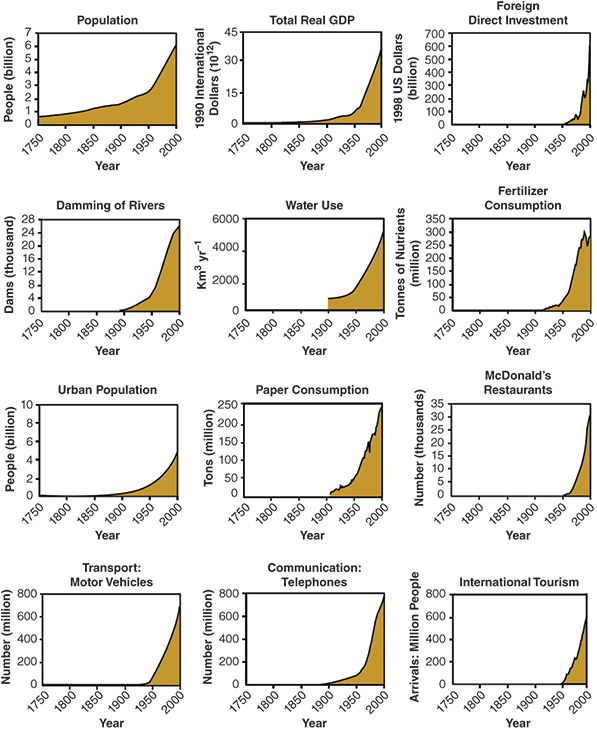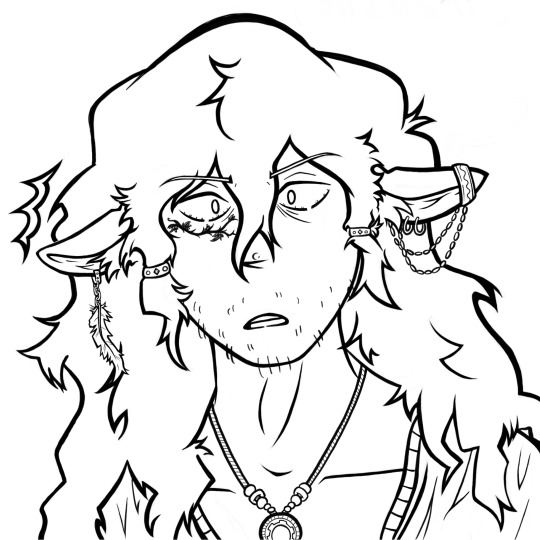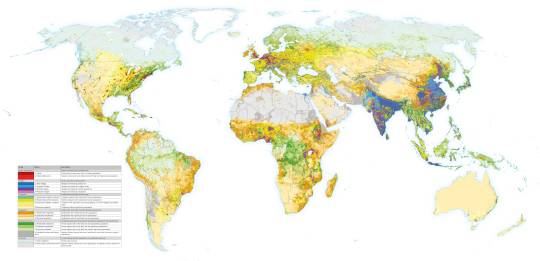#anthrome
Photo

A global view of the natures shaped by people over the last 12,000 years
Source and details >>
by u/GoldenSpamfish
92 notes
·
View notes
Text



Slavic Treasures Moose Hunter Blown Glass Christmas Ornament 02-572 NIB Poland ebay diannbretto0
#ornament#christmas ornament#moose#hunter#hunt#anthrom#anthromorphic#antropomorphic#gun#camo#camouflage#slavic treasures
13 notes
·
View notes
Text

Commission for the bestie @ask11thmaredoctor
4 notes
·
View notes
Text

artblock or art exhaustion is still on so you get some anthromized blorbos arguing , as usual
10 notes
·
View notes
Text

Existe la idea errónea de que no se puede confiar en que los humanos, en general, cuiden la naturaleza. Aunque estudios recientes han demostrado que grandes áreas consideradas «prístinas y salvajes», como la Amazonía, la selva india, la sabana africana, han sido modeladas en gran medida por sociedades humanas a lo largo de miles de años.
Erle Ellis de UMBC y su equipo muestran que las personas han dado forma a la ecología de la Tierra durante 12,000 años.
"Nuestro trabajo hace ver que la mayoría de las áreas representadas como 'vírgenes', 'salvajes' y 'naturales' son en realidad áreas con una larga historia de ocupación y uso humano", dice Erle Ellis.
“Este estudio confirma, en una escala que no se conocía previamente, que los pueblos indígenas han manejado e impactado los ecosistemas durante miles de años, principalmente de manera positiva”, dice el antropólogo Darren J. Ranco y de la Nación India Penobscot, y señala que los pueblos indígenas actualmente ejercen algún nivel de gestión de alrededor del 5% de las tierras del mundo, en las que existe el 80% de la biodiversidad mundial.
Este mito que sostiene que la biodiversidad solo se puede salvar si el espacio está «vacío y salvaje» y que las poblaciones locales no
saben cómo administrar sus territorios (y que, por lo tanto, necesitan a las grandes organizaciones conservacionistas), es peligroso: ha conseguido que se excluya a las poblaciones indígenas y locales de esas llamadas zonas de conservación.
Fuente: https://umbc.edu/…/umbcs-erle-ellis-and-international…/
https://anthroecology.org/anthromes/guide/
6 notes
·
View notes
Text
youtube
i'd like a bed, as it would make a nice elm (?)
to remind me of the time,
i passed so snugly -
it would be made of wood - perhaps red wood, even better to remind me of the things…
that made me want to drop! (?)
this is where you'd find me
embedded in anthromes… (?)
ordering lost, a heart is (?)
embedded in anthromes…
i would like a bed, opportune as it would make a nice elm
to remind me of the time,
I passed so snugly to bed!
to remind me - crowned with many flowers! (?)
this is where you'd find me…
facing my last hour.
this is where you'd find me,
embedded in anthromes…
ordering lost, a heart is (?)
embedded in anthromes…
this is where you'd find me,
mee-hee-heeee!
sloppy hand-done transcript provided, as this song is nowhere near well-enough known to have it's own lyrics written down anywhere (from what i have seen, anyway)
2 notes
·
View notes
Note
IS THAT AN ANTHROMAL?!
You'll have to clarify who you mean, dear viewer.
0 notes
Text
Anthropocene: A Very Short Introduction
A summary of key concepts in Anthropocene: A Very Short Introduction by Erle C. Ellis. (Just some book notes, because tumblr is simply There and this all would otherwise go on post-its)
The Great Acceleration c. 1950
Ecosystem Engineers and Biotic Homogenisation
The Pristine Myth
The Anthropocene: rambunctious garden, the Homogocene, Anthromes
Natural Historical Base Levels and the Antropocene GSSP
1. The Great Acceleration c. 1950
The Great Acceleration is the 'dramatic jump in the rate of human and environmental changes' with a 'striking inflection point around 1950'. Steep to exponential growth across many parameters.


Starting in the 1950s humans have shifted Earth systems into a new and unprecedented state beyond their range of natural variability. This is a no–analogue state (i.e. there is no equivalent in the geological record, where some predictability in climate variations can be derived from Milankovitch cycles and the Faint Young Sun Paradox and so on). This is what the Anthropocene is founded on.
Climate Context: major climate shifts i.e. glacial–interglacial transitions are normal in the Quarternary period (2.6Ma to present). The Holocene epoch (11.7ka—c.1950) is interglacial, and 'an island of climate stability in a sea of extremes'. Glacial–interglacial regime shifts are bi–stable and cyclical but there are also one–way regime shifts (e.g. after Earth's biogenic oxygenation, after major volcanic eruptions).
The Holocene to the Anthropocene is one such change, known as a tipping point: the Earth system permanently leaves the stable Holocene climate state and tips into the new, less stable Anthropocene.
2. Ecosystem Engineers and Biotic Homogenisation
'All organisms alter their environments merely by taking up space' but 'some species, known as ecosystem engineers, have even greater effects' via niche construction, where organisms alter their environments to reproduce the ideal environmental conditions they must live in (e.g. earthworms, beavers).
Humans are the ultimate ecosystem engineers — 'the development and accumulation of modern human behaviours marked a major long-term shift in human capacities for niche construction.'
The single largest environmental change wrought by humans has been via agriculture.
Ancient agriculture and anthropogenic soil production: early civilisations have altered soils e.g. Europe's manure–enriched 'plaggen' soils, the Amazon's charcoal enriched 'terra preta' soils, and various anthrosols altered by tilling, irrigation etc (>4000BCE).
Globalisation and the transition from 'old world' to 'new world' societies resulted in the proliferation of independently evolved species across all human–inhabited continents (crops, livestock, etc). This has resulted in biotic homogenisation – ecosystems have been affected at the species level by globalisation
3. The Pristine Myth
Humans have very dramatically altered patterns of flora and fauna in the last 50,000 years (not just industrially from 1950). The idea that pre–industrial environments are untouched and pristine is misrepresentative.
Hunter Gatherers and the Extinction of Megafauna: Extinctions of large herbivores like the woolly mammoth transformed grasslands into woodlands (late Pleistocene to early Holocene). Mega-herbivore hunting and ancient agriculture (e.g. altering soil geochemistry) resulted in woodland generation.
Dense woodland is therefore not an untouched pristine habitat (as we might imagine it). It is the result of long term management by earlier agrarian and preindustrial societies.
'The Pristine Myth—that places without humans today represent an ecology without prior human influence—is now recognized as a serious barrier to understanding contemporary ecological patterns and processes.'
4. The Anthropocene: rambunctious garden, the Homogocene, Anthromes
'Life still thrives in what writer Emma Marris has called the rambunctious garden of the Anthropocene, in which novel ecosystems form the new wild.'
Global mixing of species and biotic homogenisation: proposed term the Homogocene; 'humans are taking the rest of the biosphere with them'
More than 75% of the terrestrial biosphere has been transformed into anthromes, or anthropogenic biomes.

'Human societies are far more than a disturbance to an otherwise natural world. Human social systems have emerged as a planetary force within the Earth system—an anthroposphere that is actively shaping and sustaining an anthropogenic biosphere.'—'Human and natural systems are globally telecoupled.'
Demographic transition model estimates human populations will level off at 11 billion but we are already exceeding Earth's biological carrying capacity—an unsustainable overshoot to 1.6 Earths.
For nine global environmental variables, exceeding 'safe limits' could lead to unacceptable environmental changes. Exceeded so far in biodiversity loss, climate change and the nitrogen cycle.

[Chapter on the politics of the Anthropocene. Was filled with too much general fury and futility to even attempt notes, but for these few highlights:
'Capitalism, not industrialization, caused Earth’s transformation by producing massive social inequalities that supported audacious strategies of global conquest, endless commodification, and relentless rationalization' plus a little bit about capitalism, colonialism and patriarchy being the complicit trio in Anthropogenic climate change.
'Is the Anthropocene a critique of the narratives of freedom?’ The asking of such a question exemplifies just how far the concept of the Anthropocene has travelled beyond its origins in the natural sciences'
'In the words of geologist James Scourse: while the anthropocenists rearrange the deck chairs, other scientists are getting on with the business of trying to understand, and do something about, the crisis we face']
5. Natural Historical Base Levels and the Antropocene GSSP
Humans have wrought many changes on Earth systems over their species lifetime; at which point do we then define the Anthropocene with a Global Boundary Stratotype Section and Point (GSSP)? (Has to be recognisable in the rock record; 1950 seems to be the favourite.)
50,000–10,000 BP: Megafauna extinction
11,000–6,000 BP: Ancient agriculture
5,000-500 BP: Homogocene, biotic homogenisation
1950: The Great Acceleration
#book notes#a very short introduction#anthropocene#just a quick summary so I do not forget new (and old) concepts#on revision: not so quick after all! two hours spent on a book already read#I have so many more to do
0 notes
Photo

Excited to share the latest addition to my #etsy shop: Turkish Vintage Area Rug, Bohemian Floor Rug, 4.3 x 8.4 Feet, FREE SHIPPING, Oushak Rug, Anatolian Rug, Handknotted Rug, Tribal Rug No 2011 https://etsy.me/2MVO94q - - - - #inmydomaine #anthrome #uoaroundyou #joybird #modernrusticdecor #sodomino #interior444 #scandiboho #currentdesignsituation #howyouhome #howwedwell #dailydecordetail #myinteriorstyletoday #bhghome #myoklstyle #interior2you #finahem #showusyourhygge #midcenturyvintage #thisiswhyihavetothrifteveryday #plantsagram #plantsmakepeoplehappy #dsnicerugs #fixerupperstyle #eclecticdecor #modernfar (Ihlara Valley - Cappadocia - Turkey) https://www.instagram.com/p/B3wJ0UJpi3F/?igshid=1jcws00ey7h01
#etsy#inmydomaine#anthrome#uoaroundyou#joybird#modernrusticdecor#sodomino#interior444#scandiboho#currentdesignsituation#howyouhome#howwedwell#dailydecordetail#myinteriorstyletoday#bhghome#myoklstyle#interior2you#finahem#showusyourhygge#midcenturyvintage#thisiswhyihavetothrifteveryday#plantsagram#plantsmakepeoplehappy#dsnicerugs#fixerupperstyle#eclecticdecor#modernfar
1 note
·
View note
Audio
Hey, I made another album. Please enjoy listening to it for free, if you feel that I deserve some money for my staggering genius, you may buy it. It is best listened to in one sitting. If you enjoy genre-blending experimental noise and dance music, well you’re probably not doing anything interesting right now so you should listen to this and show it to your friends to impress them. Also features a fun little cover at the end.
62 notes
·
View notes
Text

I missed drawing god!Shouta more than I'm willing to admit
(click for better quality!)
#catch me out here making artwork for my own fics like the menace that i am#i added a few little things to his design and i'll probably add more if i draw him again#just consider it an outfit change. maybe mic demanded to do his hair and did it differently.#i spent a lot of time coloring this only to find i liked the linework better :|#bnha#aizawa#eraserhead#anthromance 101#kukunochi!aizawa#art#fanart#aizawa shouta#shouta aizawa
88 notes
·
View notes
Photo

Anthropogenic biomes (anthromes) are global ecological patterns created by the sustained interactions between humans and ecosystems.
149 notes
·
View notes
Note
ANTHROMANCE 101 AJSJDJDKL I'M GOING TO LOSE MY MIND THAT IS THE OFFICIAL TAG NOW. And regrettably, I can't tell you much about this AU because I know close to nothing about it. I've written about 300 words and my favorite line so far is, "Sure. I'm growing out my beard so I can have a few birds nest in it for dramatic effect." 💀
JHGFDHJK IM- 💀
ok ok i’m really interested!! it has good, funny potential and i’m super into it. how about some questions that you totally don’t have to answer but that i definitely wanna know all about and might help with fleshing things out?
how does anthro prof hizashi find out shouta is a woodland/forest god??
did they know each other previously?
is shouta incognito at the university as a professor himself? if so, what does he teach??
what’s shouta incognito for? is he hiding from something or someone?
is it a slow-burn? or fast friends to lovers??
what other characters are in this AU?
does shouta ever deliberately misinform hizashi about things like the minotaur hjgfdsghj or is he open and honest??
^actually, at what point does shouta open up to hizashi, if at all?
does shouta have foresty god powers?? what are they?! do they parallel his canon quirk?
are those animal ears?? what kind and does he have more animal features?
#anthromance 101#i just. i fuckin love aus okay and this is so interesting#when i see forest god stuff i just immediately start going wild cause it's so sick#and like. OKAY OKAY PRINCESS MONONOKE IS MY FAVE GHIBLI FILM AND I ALWAYS THINK ABOUT THE GOD OF THE FOREST#AND LIKE THE WHOLE AESTHETIC OF THAT FILM YANNO??#washload#ask
30 notes
·
View notes
Text
More anthromals: Duck, Grizzly Bear, Flamingo, Elephant, Snake, Octopus, Lynx, and Monarch Butterfly.

#fandomation#anthropomorphic#anthromals#animals#elephant#bear#lynx#flamingo#octopus#butterfly#duck#snake#cuteness#cute
2 notes
·
View notes

